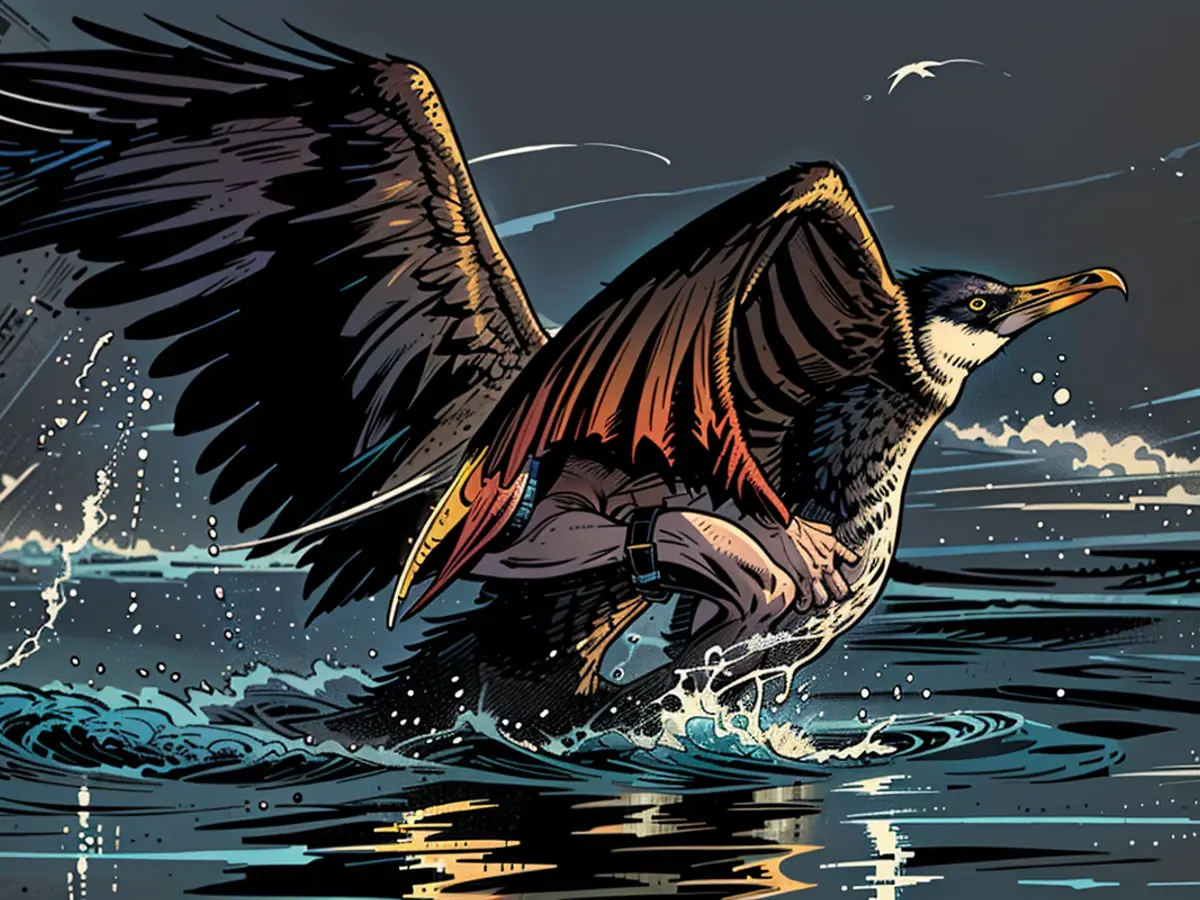Nature - First extinct, now numerous: cormorants annoy anglers
The Cormorant, once a fish hunter nearly extinct in Hessen, returns. Taking advantage of species protection, its population is increasing again, much to the dismay of anglers and fishermen. In the hessian coalition contract, Black-Red has recorded: "To enable efficient population management and practical damage prevention, beavers and cormorants must be included in the list of game animal species." The European Community had placed these birds under protection in 1979.
According to the Hessian State Office for Nature, Environment and Geology (HLNUG), the Cormorant was "extirpated in the federal state through intense hunting and a low food supply." The reintroduction began in 1985. More and more Cormorans are seen flying over Hessian waters. According to HLNUG, the population of these black water birds has stabilized at around 450 breeding pairs in the past ten years. In addition, guests from abroad also winter in Hessen. As migratory birds, Kormorans are also present in Hesse in large numbers during the winter. For example, approximately 3000 were counted monthly on average during the winter 2022/23.
A Cormorant (Phalacrocorax carbo) is voracious: Experts say it can consume up to half a kilogram of fish per day. It hunts underwater. Nature conservationists are pleased about the return of these sociable birds and see it as a success of species protection.
According to the Vice President of the Association of Hessian Fishermen, Karl Schwebel, Cormorans are more numerous today than in earlier centuries. They threatened biodiversity by catching rare fish species. Apart from nest-raiding washing bears, rare eagles, and owls, Cormorans have few enemies. In the winter, they hunted in fish ponds, "because they no longer froze over." In addition, diving Cormorants often only injured their prey underwater, according to Schwebel. However, the Nature and Biodiversity Conservation Union (NABU) disputes this: That only happens rarely with larger fish. In 2010, the controversial water bird was named Germany's Bird of the Year.
Bird of the Year 2010
- The Cormorant, named Germany's Bird of the Year in 2010, has seen its population increase significantly in Hesse thanks to the European Community's species protection efforts initiated in 1979.
- The Hessian coalition agreement between Black-Red includes plans to manage and prevent damage caused by protected species like the Cormorant and beaver, which are classified as game animal species.
- Despite being almost extinct in Hesse due to overhunting and low food supply, the return of the Cormorant has become a notable success story in nature conservation efforts.
- The increase in Cormorant population has been a point of contention for anglers and fishermen, who argue that these birds pose a threat to rare fish species in Hesse's waters.
- Birds like Cormorants, alongside other species protected under nature conservation laws, contribute to the rich biodiversity in Hesse and the broader EC environment, emphasizing the importance of these measures for the environment.








